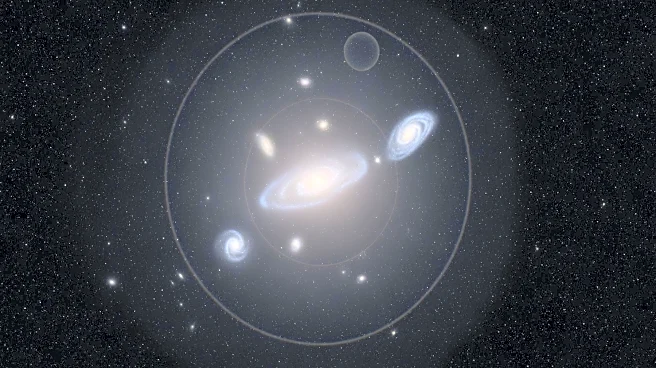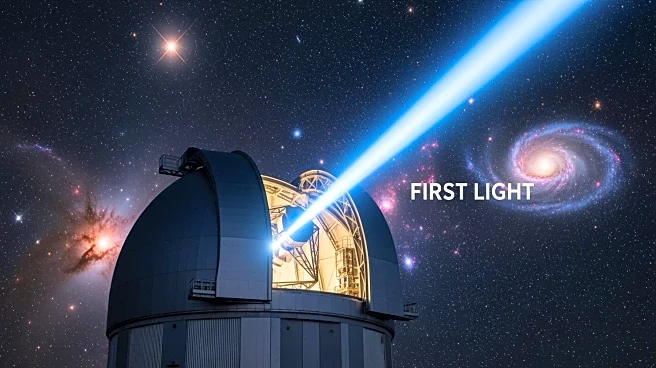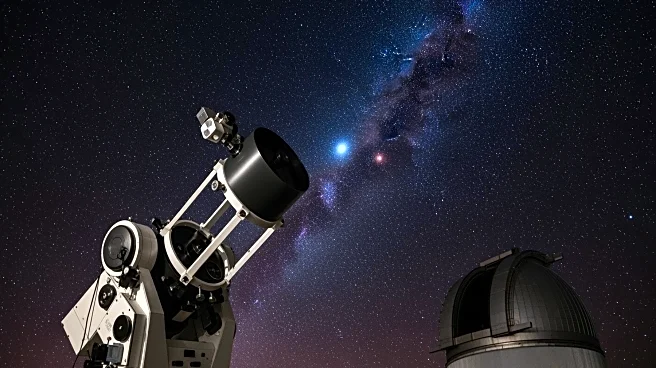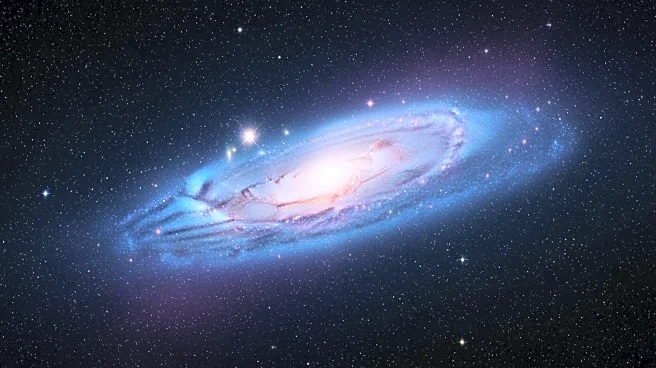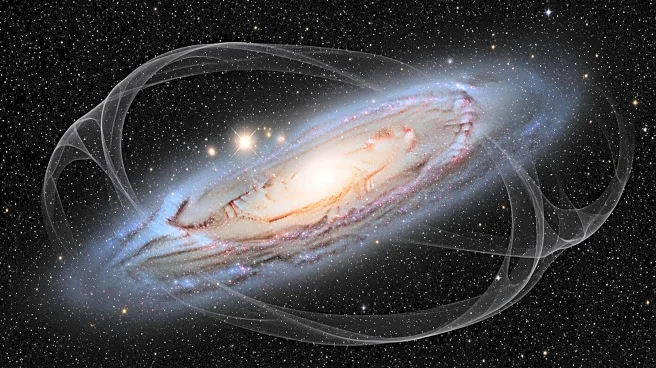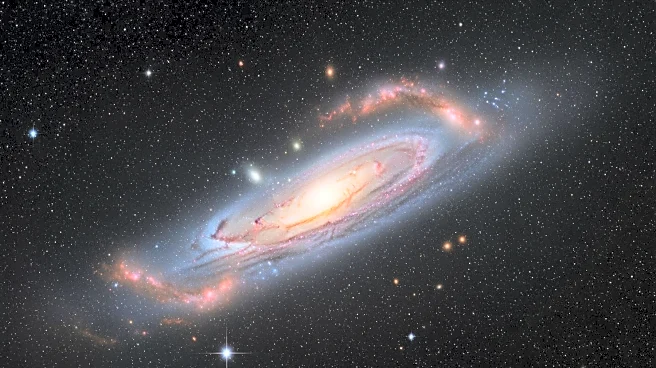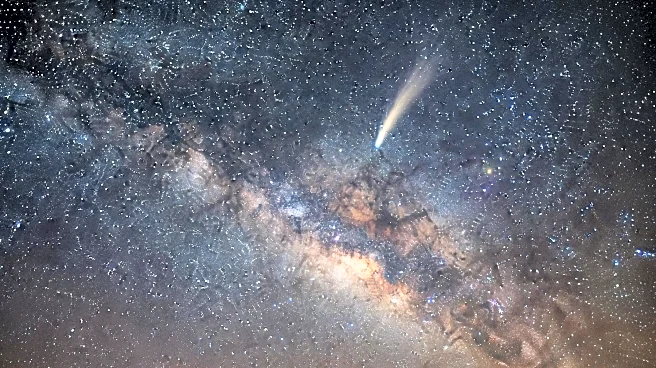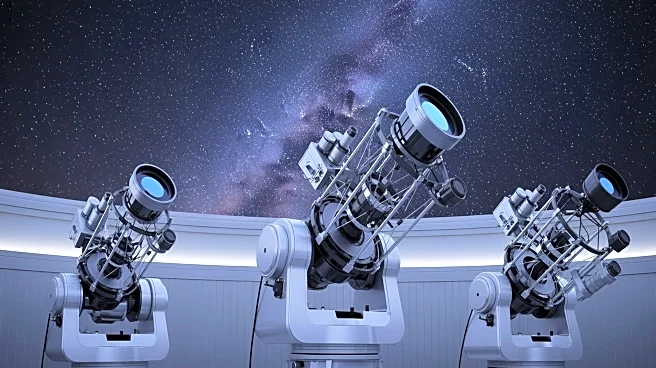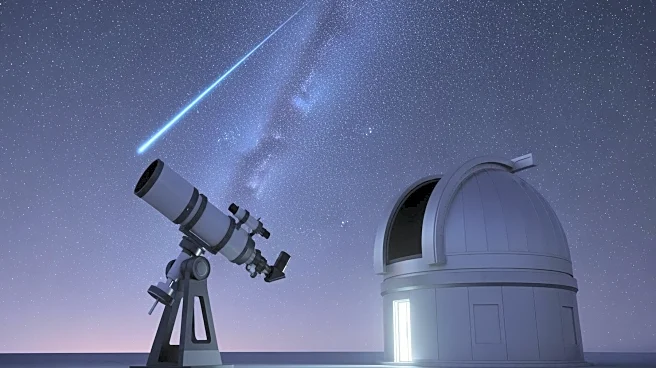What's Happening?
An international team of researchers led by the Leibniz Institute for Astrophysics Potsdam has conducted a study on the gravitational behavior of dwarf galaxies, challenging the Modified Newtonian Dynamics
(MOND) theory. The study analyzed stellar velocity data from 12 of the smallest galaxies, revealing that their gravitational fields cannot be explained by visible matter alone. Instead, the presence of dark matter provides a better match to the observed data. This research, accepted for publication in Astronomy & Astrophysics, suggests that the radial acceleration relation, a long-standing assumption about galaxy behavior, breaks down in smaller galaxies.
Why It's Important?
The findings reinforce the necessity of dark matter in explaining the gravitational dynamics of dwarf galaxies, which do not conform to the expectations derived from larger galaxies. This has significant implications for our understanding of cosmic structures and the fundamental forces governing them. By narrowing the space for alternative theories like MOND, the study advances the scientific consensus on dark matter's role in the universe. This could influence future research directions and funding priorities in astrophysics, as scientists seek to uncover the nature of dark matter.
What's Next?
Future observations of even fainter and more distant galaxies are expected to further refine our understanding of dark matter. As researchers continue to gather data, they aim to pinpoint the characteristics and composition of dark matter, potentially leading to breakthroughs in cosmology. The study's results may also prompt revisions in theoretical models and inspire new hypotheses about the universe's structure.
Beyond the Headlines
The study highlights the limitations of MOND and similar theories, emphasizing the need for a paradigm shift in how we understand gravitational forces at cosmic scales. This could lead to a reevaluation of existing models and stimulate innovative approaches to studying the universe's hidden components.
